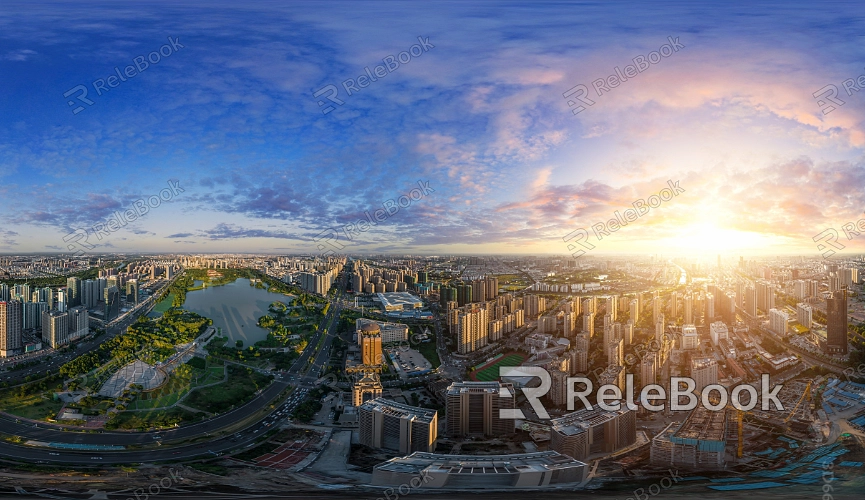Why Is My HDR Texture Not Working in Unity?
HDR textures are widely used to enhance lighting effects in scenes, creating more realistic visuals. However, when importing HDR textures into Unity, you might encounter issues where the textures don’t perform as expected, leading to suboptimal lighting results. This can be particularly problematic in scenarios like game development, architectural visualization, and virtual reality experiences, where high-quality lighting is crucial. When HDR textures fail to work properly, it can negatively impact the overall visual quality of your project. This article will explore common reasons why HDR textures might not function correctly in Unity and offer solutions to help designers troubleshoot and optimize their use of HDR textures in their projects.

1. Incorrect HDR Texture Import Settings
Incompatible File Format: HDR textures typically come in HDR or EXR formats, which require specific settings for proper import into Unity. If the texture file format is not compatible, Unity may not recognize or render them correctly. Make sure you’re using a file format that is supported by Unity, and select the appropriate options during the import process.
sRGB Not Enabled: If the sRGB option is not enabled during import, the color space might be inaccurate, leading to abnormal lighting effects. Check the import settings for your texture and ensure that sRGB is enabled.
2. Incorrect Material Settings
Improper Material Type Selection: Choosing the right material type is crucial when using HDR textures. If the material type is not suitable, such as applying HDR textures to materials that don’t support HDR, the lighting effects might be significantly reduced. It’s recommended to use the Standard Shader or a custom shader that fully leverages the capabilities of HDR textures.
Insufficient Emission Intensity: If you’ve applied the HDR texture to the Emission slot of a material but haven’t adjusted the Emission intensity, the texture’s effect might be too subtle. Make sure to increase the Emission intensity appropriately to enhance the material’s lighting effect.
3. Improper Environment Lighting Settings
Incorrect Skybox Configuration: HDR textures are often used in Skybox materials to provide global environment lighting. If the Skybox settings are incorrect, such as not properly applying the HDR texture or not adjusting the lighting intensity, the resulting lighting might be weak or distorted. Check the Lighting panel’s environment lighting settings to ensure the HDR texture is correctly applied.
Insufficient Reflection Probes: Reflection probes capture lighting information in a scene and generate reflection effects. If there aren’t enough reflection probes or if they are improperly configured, the HDR texture’s reflection effect might not display correctly. Place sufficient reflection probes in the scene and ensure they capture the lighting information from the HDR texture.

4. Resolution or Compression Issues
Low Texture Resolution: The resolution of HDR textures directly impacts their effectiveness in a scene. If the resolution is too low, the texture might not provide enough detail, affecting the lighting quality. Choose a higher resolution in the import settings, especially in scenes where high-quality lighting is essential.
Inappropriate Compression Format: Unity supports various compression formats, and some might negatively impact the lighting effects of HDR textures. Choosing the wrong compression format could degrade the texture quality or cause color distortion. It’s important to balance project needs and performance, selecting a compression format that suits your project.
5. Texture Loading and Memory Management
Dynamic Loading Failures: In large or complex scenes, HDR textures might be dynamically loaded or unloaded. If the loading management is inadequate, textures may not display correctly when needed, affecting the lighting. Optimize the dynamic loading and memory management of textures through scripting to ensure they load smoothly when required.
High Memory Usage: HDR textures usually have high resolutions and consume a lot of memory. If there are too many HDR textures in a scene, it could lead to excessive memory usage, impacting overall performance. Consider using multiple resolutions of HDR textures in your project and load them according to actual needs.
6. Unity Version or Plugin Compatibility
Unity Version Issues: Different versions of Unity may offer varying levels of support for HDR textures. If you’re using an older version of Unity, HDR textures might not work as expected. It’s advisable to upgrade to the latest version of Unity to ensure optimal compatibility and performance.
Plugin or Tool Conflicts: If you’re using other plugins or tools in your project, they might conflict with the rendering of HDR textures. Check whether there are any plugins incompatible with HDR textures and adjust or replace them as needed.
By addressing these potential issues, designers can identify why their HDR textures aren’t working in Unity and take the necessary steps to fix them. This will improve the lighting quality in scenes and enhance the overall visual impact of your projects.
If you’re looking for high-quality HDR texture resources, Relebook offers a wide selection that can help you achieve outstanding visual results in your projects. Visit Relebook to explore more textures and models that can elevate your work.

